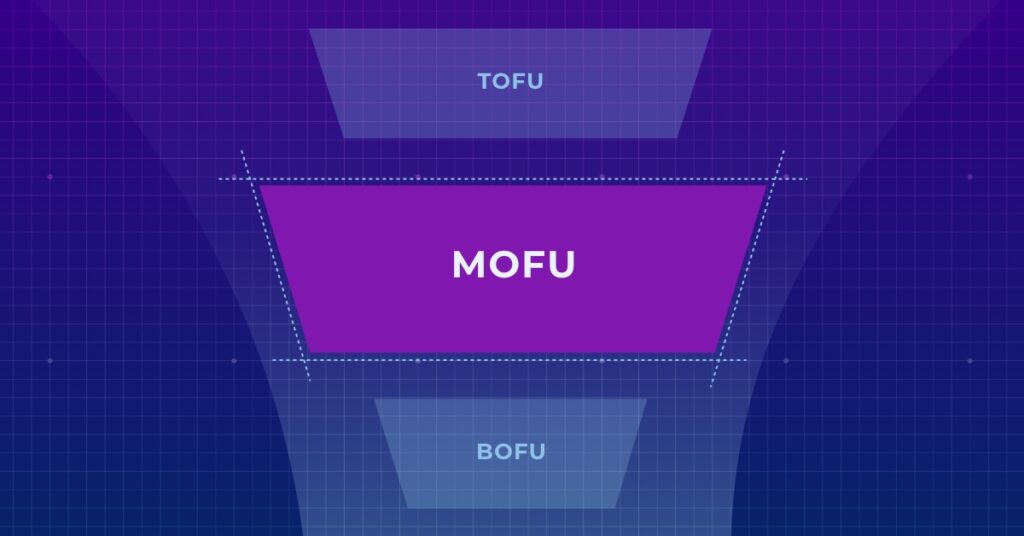Middle of the funnel content is notoriously hard. It’s actually a problem, as most companies don’t have the content they need to help buyers progress in their journey, hamstringing marketers who want to create full-funnel campaigns.
In our previous article on middle of the funnel content, we discussed the 3 pillars of content at that stage and provided a great list of examples. In this article, we pivot to tips for creating middle of the funnel (MOFU) content that will make it both easier to generate and more effective.
The Big Tip: Start middle of the funnel content creation by collaborating with Sales.
MOFU content helps your audience answer the questions that come up as they consider your offering. Which means the questions prospects ask your sales team during their process should drive your middle of the funnel content creation—especially since we know 55% of Marketers would LOVE for Sales to be involved in the content creation process.
Every time Sales has been on a phone call where the prospect says something along the lines of “I saw on your website that XYZ… but what about 123?” or “how does XYZ work”—those are topics to create MOFU content around.
Here are three marks to hit when collaborating with Sales on middle of the funnel content.
Ask your sales team to walk you through their typical sales conversation. Pay attention to what buyers already know when they come in, and what they want to know to move forward. This can give you an idea of what content and messaging is needed all along the journey. Additionally, it’ll help you discover messages or assets that may be missing at the top or bottom of the funnel.
Leverage the questions your sales team is getting. If your sales team is getting the same questions often, see if you have content that answers them, and make that content more prominent in your messaging. If you don’t have it, make it. That content educates the prospect. It saves your sales team the conversation. It moves them further down the funnel. It helps convert them to customers.
Create the content your sales team wishes existed. Ask your sales team what resources they’d like to be able to send to prospects. This is another effective way to identify missing content. Even if you can’t create exactly what they’re looking for, you might be able to meet the need in another way.
6 More tips for creating engaging middle of the funnel content.
Now that you’ve collaborated with Sales, it’s time to start creating some content. Here are our top recommendations to help you create MOFU assets that effectively bridges the gap between awareness and decision—and hopefully tips your prospects towards purchase.
1. Understand your audience—and the whole buying group—deeply.
The first mistake when creating MOFU content is to aim it all at one target persona. We know there are 6-10 members of the average buying committee. Figure out the 1-3 personas who you need to engage with at this stage of the funnel. Understand who they are, what their pain points and questions are, and where they’re active online.
Adapt your assets to fit these different personas and their varying needs. For example, a technical user might appreciate detailed whitepapers, while a decision-maker might be moved more by concise case studies. By tailoring your content library to each persona, you can engage the entire buying committee more effectively—and move the whole account down the journey.
2. Address their potential concerns about your solution.
Based on your collaboration with Sales, you should know exactly what concerns, doubts and even objections prospects tend to have with your solution. By proactively addressing those concerns with self-serve and discoverable content, you’re achieving two things:
- Preventing some prospects from slipping away to competitors before they have a chance to clarify doubts with Sales.
- Helping conversations with Sales nudge more towards hammering down logistics than addressing concerns.
3. Don’t hold back value.
Don’t be afraid to give away too much information too early. The only way you’ll build trust is by showing you have the answers—which you achieve by giving the answers. That’s why we love a good “how to” guide. By showing you know what you’re talking about, prospects are more likely to turn to you for help. If they can get enough information from your answers to not hire you…they were never going to be a customer anyways.
4. Collab with Sales, but don’t make your middle of the funnel content sales-y.
Prospects are interested at this point, but they’re still not likely to react well to hard sales messages. Focus on providing valuable insights and solutions to people’s problems rather than pushing for a sale.
One way to think about this: if your prospects have made it to your MOFU content, they’re likely interested in the kind of solution you offer, but not necessarily convinced about you yet. Your content at this stage is doing double duty—educating further on your solution while building trust for your company as the solution provider. The Sales push doesn’t come until after you’ve built that trust.
5. That being said, still lay out a clear call to action.
If your MOFU content is doing its job, prospects will be in a different place by the time they’ve digested several pieces of your content, relative to when they first started giving it a taste. They will have progressed in their journey down your funnel. Again, without being aggressively salesy, you want to provide a clear and compelling CTA. This will guide your audience to the next step in their journey—whether that’s another piece of content or the conversation with Sales.
6. And don’t forget to follow up.
Following up on leads at the TOFU stage usually consists of offering them more TOFU content, with some MOFU stuff mixed in. At the MOFU stage, leads are starting to turn to prospects. However you can’t assume they’re ready to seek out a conversation on their own. Build up your lead nurturing strategy with relevant follow-up emails, ABM retargeting ads and personalized communication to really ease these folks into a purchase.
Should you gate your MOFU content?
Gating is currently every marketer’s most or least favorite topic. The 2024 Netline Content Consumption and Demand Report says demand for gated B2B content has consistently risen 14.3% YOY since 2019. So does that mean we should immediately gate all our content?
Hmm. Not quite.
We believe effective marketing is about delivering what your audience wants and needs—not about what you want to track. That means a few things when it comes to gating.
First: Make discovery easy. Your audience needs your solution and wants to learn more about it? Make it easy for them. Don’t create barriers for your prospects at the TOFU or even MOFU level.
Second: Gate at the right time—when it makes sense to personalize the conversation because they’re sending some real interest signals.
Third: Gate the right content. There’s got to be some real value in that content if you’re going to make a prospect jump through hoops to get it. Think research reports, tutorials, certifications, quizzes and tools with worthwhile results, and of course, webinars.
Conclusion: We’re not anti-gating—especially not considering Netline’s reporting. Rather, we’re very purposeful about what and when to gate.
The Iron Horse insight.
Creating middle of the funnel content can require some real attention from SMEs, pushing past the 101-level knowledge that your writers can pull together with intuition and a solid Google search. Middle of the funnel content takes longer, it’s more technical, it’s just harder to do.
It’s also what turns your prospects from “people who’ve seen your blog” to “people who are interested and invested in what you offer.” It’s absolutely worth it.




